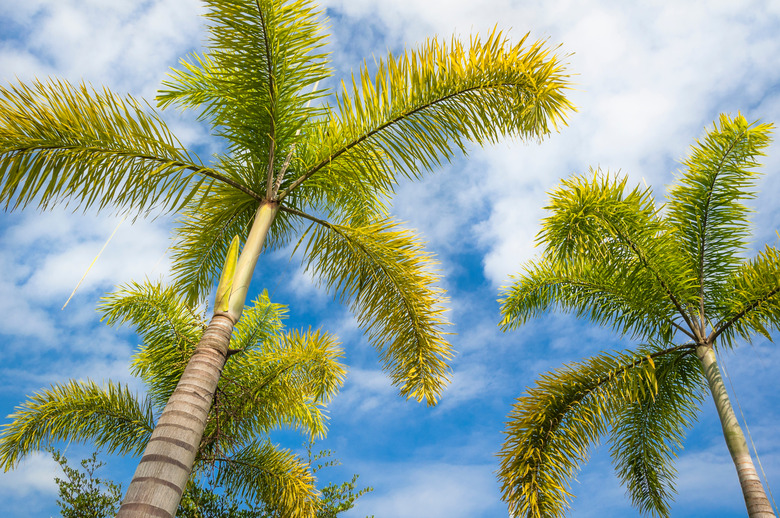How Close To Plant Foxtail Palm Trees
The foxtail palm is a relatively new species for gardeners around the world to explore, and it has a rather interesting history. This medium-sized palm tree is a breeze to add to any tropical landscape. They have sturdy yet feathery leaves that give the foxtail palm a lush quality as a single tree or in swanky, slender rows.
Facts About the Foxtail Palm
This fun, feathery palm has a rather serious name. The foxtail palm's official botanical name is Wodyetia bifurcata. The fast-growing palm can push up to 35 feet tall under the right conditions. Trees grow to their tallest and fullest potential in United States Agriculture Department zones 10 and 11, where they grow as perennials. That's a narrow area, in only the warmest climates.
The leaves give the palm its foxtail moniker. Hundreds of fishtail leaflets are attached along the rib of the leaf. The foxtail palm grows fat clusters of cheery red seeds.
This feathery palm hails from Australia and has an interesting backstory.
History of the Foxtail Palm
A surprising fact about the foxtail palm is that it is a relatively new species to have growing in gardens around the world. It wasn't presented to the world until 1978 when the aboriginal arborist Wodyetia alerted botanists of this lovely palm specimen that thrived in his tribe's region.
After its initial introduction to the world from its relative obscurity in the wilds of Australia, the seeds of the foxtail palm became difficult to find. Botanists and palm enthusiasts around the world snapped up the tree seeds to attempt to grow them in other hardiness zones.
The Australian government put a ban on seed exports in efforts to protect the foxtail palm. The palm adapted well to landscape areas and greenhouses around the world and is producing plenty of seeds for cultivating.
How to Fertilize a Foxtail Palm
In order to get the long, lovely strands of the fronds at the tippy top of the foxtail palm, it needs to be fed a consistent mix of nutrients at its base. They are heavy feeders that require a good soaking of water and the right mix of fertilizer three times a year.
The best time to fertilize a foxtail palm is in the spring, summer and fall.
Best Way to Grow a Foxtail Palm
A granular palm fertilizer with micronutrients will keep the foxtail tree in fine fettle. Add manganese or magnesium once or twice a year if the fronds begin to lose their signature bright green color.
Foxtail palms love sunshine and are drought resistant. This makes them a hardy palm. However, they need more fertilizer than most palms. Plant the tree with organic peat humus near the top of the hole to give it a good start.
Pruning a Foxtail Palm
A benefit of a foxtail palm over other palm trees is that the fronds don't require much attention. There is no need for ladders or cutting tools to trim the tree as it grows.
The old fronds will fall off as they age and turn brown around the edges. Just be prepared for the slightly bulky and heavy palm leaves to fall onto structures directly under the falling fronds.
How Far to Space Foxtail Palms
Considering how large the palm fronds are on the foxtail, each tree should be planted at least 8 feet from a home. The palm leaves can get damaged or can crack a structure if they are crowded by a building.
A row of foxtails can make for a showy property border if planted a minimum of 6 feet apart. A single foxtail palm can be planted 3 feet from surrounding structures, such as fences.
It has a shallow root system but sucks up a lot of water. It can be planted within 3 feet of other trees without getting its roots tangled in established gardens.
